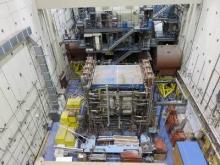Highlights of the SARA 2015 Meeting at the NRAO, Green Bank, West Virginia
June 21, 2015 saw the opening of the annual meeting of the Society of Amateur Radio Astronmers at the National Radio Astronomy Observatory in Green Bank, West Virginia. The meeting was well attended by members with 55 registered attendees, representing states of the United States as far away as Washington state, as well as from many states surrounding the NRAO location.


